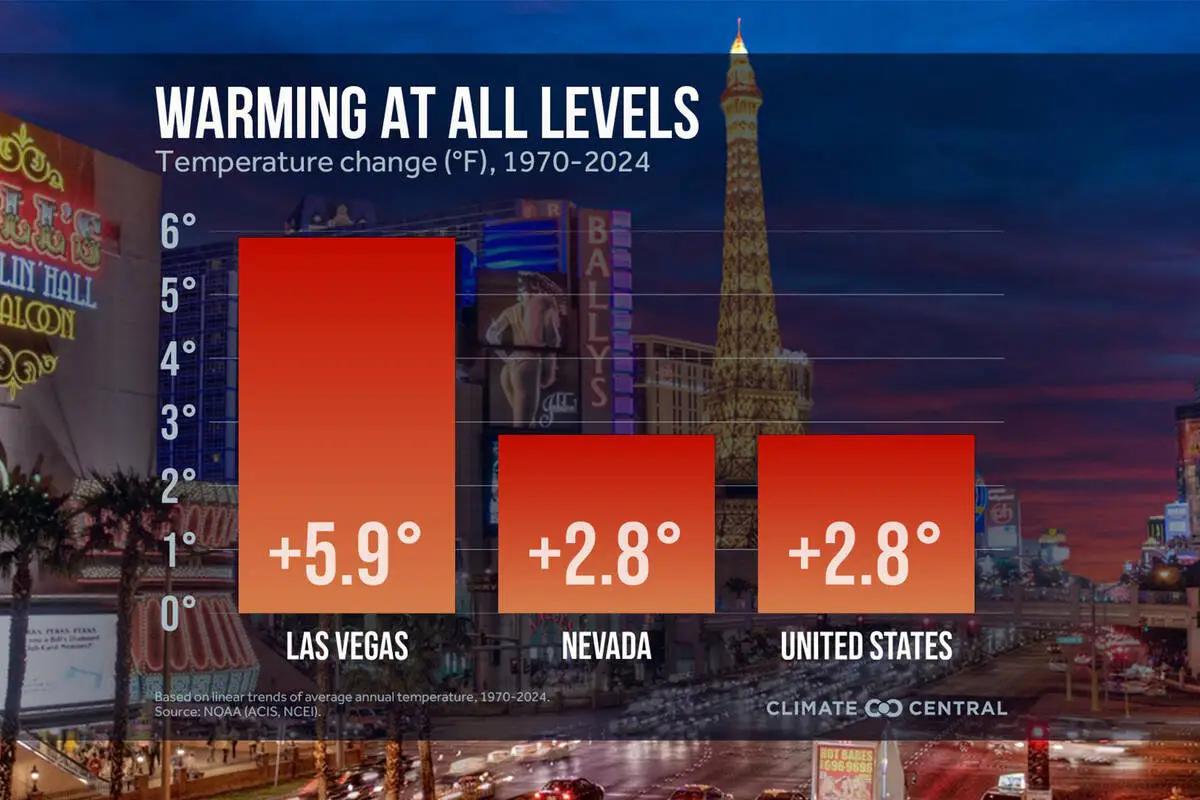Las Vegas and Reno are experiencing significant temperature increases, making them the fastest-warming cities in the United States since 1970. Reno has seen a rise of 7.8 degrees in its average annual temperature, while Las Vegas has experienced a 5.9-degree increase. This trend poses a serious challenge for Nevada, particularly regarding climate change and its associated risks, such as deadly desert heat.
In 2024, the region recorded an especially intense summer, which highlighted the urgency of addressing climate change. Climate Central, a group of climate scientists, attributes these rising temperatures to the burning of fossil fuels, which trap heat at the Earth’s surface. The concentration of carbon dioxide has risen by 30 percent since 1970, exacerbating the warming trend.
To counter these effects, Nevada cities are implementing strategies to reduce greenhouse gas emissions and mitigate the impact of heat. Las Vegas, for instance, has developed a 2050 master plan that includes measures to address climate change and its consequences. The plan emphasizes the importance of tree canopy to combat the urban heat island effect, with a goal of planting an additional 60,000 trees.
Moreover, a recent study suggests that increasing tree cover in Las Vegas could significantly reduce air temperatures during heat waves. The city is also conducting an inventory of its greenhouse gas emissions, with a target of achieving carbon neutrality in city operations by 2050 and a 28 percent reduction in community-wide emissions.
Efforts to adapt to these challenges are ongoing, with local officials committed to addressing issues like drought and urban heat. The passage of Assembly Bill 96, which mandates extreme heat considerations in municipal planning, is a step forward in preparing Nevada’s cities for a hotter future.






















